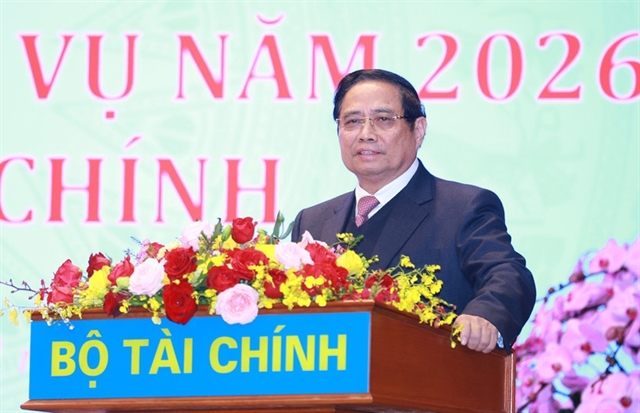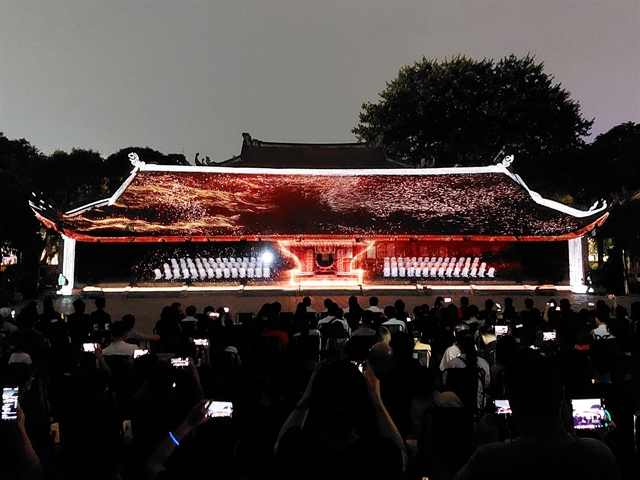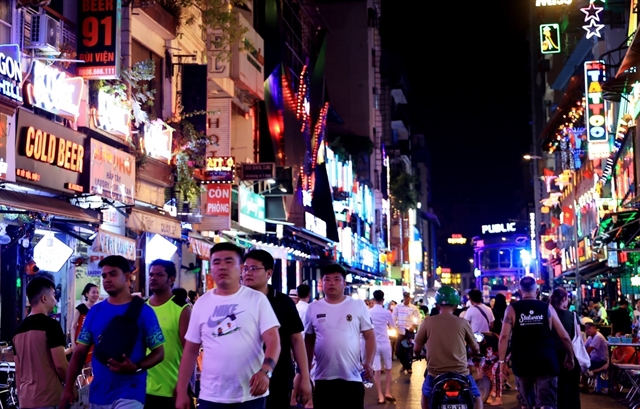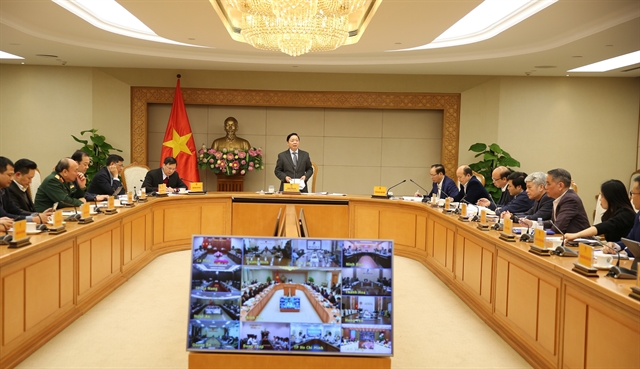 Society
Society

 |
| The Văn Miếu-Quốc Tử Giám (Temple of Literature) tour offers a unique and different experience for tourists by using modern 3D mapping technology to display vivid images and tell stories about Confucianism and the country’s history and sages. — VNA/VNS Photo |
HÀ NỘI — The Ministry of Culture, Sports and Tourism recently announced a project to develop night-time tourism, which is gaining popularity in Việt Nam. The idea is to develop another revenue stream for the tourism sector, popularise the Việt Nam brand, and improve competitiveness by providing memorable experiences for visitors.
Accordingly, the project will focus on developing cultural activities, festivals and nightlife entertainment to contribute to promoting and preserving traditional culture, creating a unique and impressive space for tourists, especially foreigners. Many key tourist areas and localities have already begun to move in this direction.
In Hà Nội, the night tour “Decoding the Imperial Citadel of Thăng Long” made its debut in April 2022 and was well received by domestic visitors. This is Hà Nội's second night tour, after that offered by the Hoả Lò Prison relic site.
Travellers begin the 1.5-hour tour at Đoan Môn (Main Gate), the entrance to Cấm Thành (Forbidden area) - the king’s residence, and learn about the site’s history, architecture and functions.
They later enjoy an ancient dance right on the glass covering the archaeological excavation area and gain insight from tour guides into this dig which will yield new information on the vestiges of the Lý, Trần and Lê dynasties. They will also visit an exhibition hall of antiquities, some dating back over 1,000 years.
At Kính Thiên Palace, travellers can offer incense to King Lý Thái Tổ, who moved the country’s capital from Hoa Lư in Ninh Bình Province to Đại La, which he renamed Thăng Long in 1010. Tour guides will also discuss the contributions of other kings to the capital’s development.
The last destination of this tour is the archaeological site at No.18 Hoàng Diệu Street, where visitors will experience a laser light show of outstanding antiquities of the Thăng Long Imperial Citadel. Tourists can take part in a game in which they identify typical objects of feudal dynasties in the past.
The northern province Quảng Ninh, home to UNESCO-recognised world natural heritage site Hạ Long Bay, is among the localities pioneering night-time tourism products. Director of the provincial Department of Tourism Phạm Ngọc Thuỷ said that night tourism in Quảng Ninh is currently focused on several services such as restaurant cruises, music galas on the bay, and night streets.
Thanks to these activities, Quảng Ninh welcomed a total of 8.86 million visitors in the first half of this year, earning VNĐ16.6 trillion (US$675.3 million) to rank third, after Hà Nội and HCM City, in terms of tourism revenue in this period.
Many other localities such as HCM City, Thừa Thiên-Hue, Đà Nẵng, Bình Thuận, Khánh Hoà. Bình Định and Cần Thơ, are exploring local potential to develop night tourism products to attract more holidaymakers.
Increasing competitiveness to attract more tourists
Experts suggest night-time tourism not only allows tourists to enjoy the unique local culture and culinary specialties, but also helps disperse the number of tourists during the daytime, thus reducing the load on main tourist destinations during peak hours and enhancing sustainability.
This type of tourism also contributes to creating more jobs for local people, promoting the local economy and increasing the competitiveness of the country’s tourism sector. However, there are problems related to night tourism that need to be solved to achieve sustainable development.
 |
| Bùi Viện walking street in HCM City is a popular nighttime destination for foreign visitors and young locals. — VNA/VNS Photo |
Difficulties to be solved
In late 2022, the Institute for Tourism Development Research (ITDR) conducted a survey on night services for tourists in Việt Nam in Đà Nẵng, Hội An (Quảng Nam), HCM City and Đà Lạt (Lâm Đồng). These sites already offer night services and are piloting the extension of service hours until 6am of the next day.
The survey found that in Hội An, services are still cursory. Tourists mainly come to visit and rarely stay overnight, and finding the workforce to provide night activities is difficult. In addition, Hội An is an ancient city and a world cultural heritage, so appropriate planning is needed when developing night services.
As for Đà Lạt, infrastructure and planning do not yet meet the needs of vehicle circulation or walking tours, while service quality is not yet professional and there are continued unresolved issues with environmental and noise pollution.
Meanwhile, many night tourism activities in HCM City are still spontaneous, and issues of management and environmental pollution need to be given appropriate attention.
For Hà Nội, the difficulty facing the capital city is lack of human resources and mechanisms to encourage local households to expand business activities, and clear planning of space and time for night services.
Forming night tourism brand of Việt Nam
Under the Ministry of Culture, Sports and Tourism’s project, five models of night tourism product development are targeted. These include: cultural artistic performances; sports; health care and beauty services; shopping and night entertainment; and night tours and culinary culture.
Bùi Hoàng Sơn, permanent member of the National Assembly’s culture and education committee, said that to successfully carry out night-time tourism and bring about high economic efficiency requires appropriate investment in infrastructure like lighting, public utilities and transport to ensure safety and convenience for tourists. Night tours also require robust policies and regulations to encourage the engagement of businesses and protect the environment.
There may be huge potential to develop night-time tourism. However, the full participation of management agencies, enterprises and the community is essential to effectively utilise that potential. — VNS




